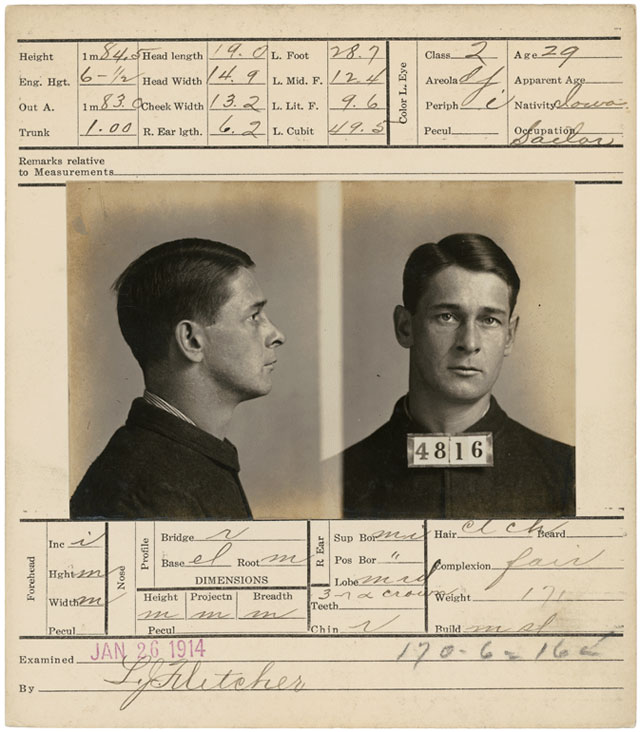Before fingerprinting

Seeing so many CSI and police procedural shows on TV today, it’s easy to take for granted being able to rapidly and accurately identify criminals. Fingerprinting, as probably the biggest technological advancement in identifying criminals, is a big part of that. But what’d we have before fingerprinting?
According to the National Law Enforcement Museum:
Alphonse Bertillon was a French criminologist who first developed this anthropometric system of physical measurements of body parts, especially components of the head and face, to produce a detailed description of an individual. This system, invented in 1879, became known as the Bertillon system, or bertillonage, and quickly gained wide acceptance as a reliable, scientific method of criminal investigation. In 1884 alone, French police used Bertillon’s system to help capture 241 repeat offenders, which helped establish the system’s effectiveness. Primarily, investigators used the Bertillon system to determine if a suspect in custody had been involved in previous crimes. Law enforcement agencies began to create archives of records of known criminals, which contained his or her anthropometric measurements, as well as full-face and profile photographs of the perpetrator (now commonly known as “mugshots,” which are still in use today).
It was essentially a criminal justice Dewey Decimal System, the first step in taking police out of the dark ages. Before Bertillion standardized measurements, police just had a jumble of descriptions and photographs with no way to organize them so they’d almost never be able to cross reference existing records when people were arrested.
Of course Bertillion’s system was just a stop-gap measure. The system was only really in use for about 30 years before fingerprints became the dominant identification method.
In 1903, a man named Will West was committed to the penitentiary at Leavenworth, Kansas, where he was photographed and measured using the Bertillon system. Will West’s measurements were found to be almost identical to a criminal at the same penitentiary named William West, who was committed for murder in 1901 and was serving a life sentence. Furthermore, their photographs showed that the two men bore a close physical resemblance to one another, although it was not clear that they were even related. In the ensuing confusion surrounding the true identities of the two men, their fingerprints conclusively identified them and demonstrated clearly that the adoption of a fingerprint identification system was more reliable than the older Bertillon system.
The guy in this photo is John Welshouse who was convicted in 1914 for violating the White Slave Act (prostitution). (via @pruned)





Stay Connected